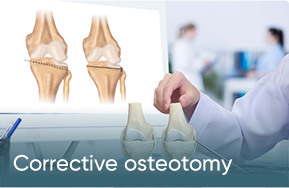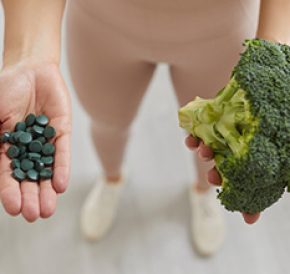
The exact mechanisms that lead to arthritis have not yet been clarified. However, scientists assume that in the course of ageing, the human body produces and/or ingests too few of the nutrients needed to keep the cartilage mass healthy and maintain the quality of the joints. Glucosamine, chondroitin and hyaluronic acid have proven to be important joint protectors in the treatment of arthritis.
The endogenous substance glucosamine, a so-called amino sugar that is very similar to D-glucose, plays a very important role in maintaining cartilage tissue healthy and is therefore an important building block of cartilage substance. Among other things, it keeps the cartilage mass soft and flexible, supports cartilage regeneration by promoting the formation of new cartilage cells and stimulates the production of synovial fluid. As already proven in many studies, on the one hand glucosamine reduces inflammation and relieves pain, and on the other hand it protects from age-related wear and tear. What studies have also shown is that glucosamine is often reduced in affected joints. Unfortunately, it may be difficult to take the substance in sufficient quantities through diet alone, as it is hardly found except in shellfish and certain mushrooms. Incidentally, it is almost exclusively absorbed as glucosamine sulphate.
Chondroitin, or chondroitin sulphate, is another important cartilage component. This is a branched-chain sugar in which two different sugar molecules – D-glucuronic acid and N-acetyl-galactosamine – alternate. Chondroitin improves joint mobility and slows down the cartilage loss, as is the case with arthritis. Chondroitin also plays a role in bone fracture healing. Furthermore, it protects cartilage from premature, age-related wear and tear by preventing the activity of certain cartilage-degrading enzymes and fighting other enzymes that starve cartilage tissue. It reduces inflammation in the joint and therefore joint pain, further preventing age-related deterioration. Like glucosamine, chondroitin must be added to the body, as it is hardly present in the diet.
Hyaluron or hyaluronic acid is polysaccharide, too, but with a linear structure, consisting of D-glucuronic acid and A-acetyl-glucosamine. Hyaluronic acid is the main component of synovial fluid and is also found in large quantities in the joint cartilage itself. Its function is to make the water stored in the tissue viscous and to ensure the sliding of the joint surfaces, which in turn is important for the stability and flexibility of the joint cartilage. Until now, patients with arthritis have usually been treated with hyaluronic acid injections, which are expensive and often require a long-term treatment. In addition, the use of injections carries a high risk of infection. In the meantime, however, researchers have succeeded in converting this important cartilage component into a special dosage form, making it possible to deliver it in pills or capsules.
Methyl sulfonyl methane, or MSM, is another substance that plays an important role in cartilage health: MSM has an anti-inflammatory and pain-relieving effect and is involved in the regeneration of cartilage and connective tissue. It supports the body in restoring destroyed cells and tissue structures and thus makes an important contribution to the functioning of the entire musculoskeletal system. Methyl sulfonyl methane is found in almost all foods, such as milk, fruit, vegetables, cereals, meat or fish, but unfortunately it is mostly destroyed by heating the food.
The two important trace elements zinc and manganese are also essential for the effectiveness of those enzymes that play a significant role in building cartilage mass and synovial fluid. Important antioxidants that protect the organism from the damaging effects of free radicals, which in turn destroy cells and tissue structures, are vitamin C, contained in many fruits and vegetables, as well as resveratrol and OPC, oligomeric proanthocyanides, obtained from grapes.
When taking these joint protection substances, it is important to pay attention to the findings of chronobiology. It is known that many substances often have an optimal action window depending on the time of day, when they are either better absorbed and/or their effectiveness is highest. This is the only way to ensure the optimal supply and to achieve rapid pain relief.
Vitamin C, for example, is best absorbed in the morning, possibly with small amounts of resveratrol, which increase this absorption. On the contrary, the intake of zinc, manganese and oligomeric proanthocyanides should preferably take place in the evening. Higher amounts of resveratol have proven more effective in the evening, too, as this is when your antioxidant potential is at its highest. Glucosamine, chondroitin, MSM and hyaluronic acid can be taken both in the morning and in the evening.










